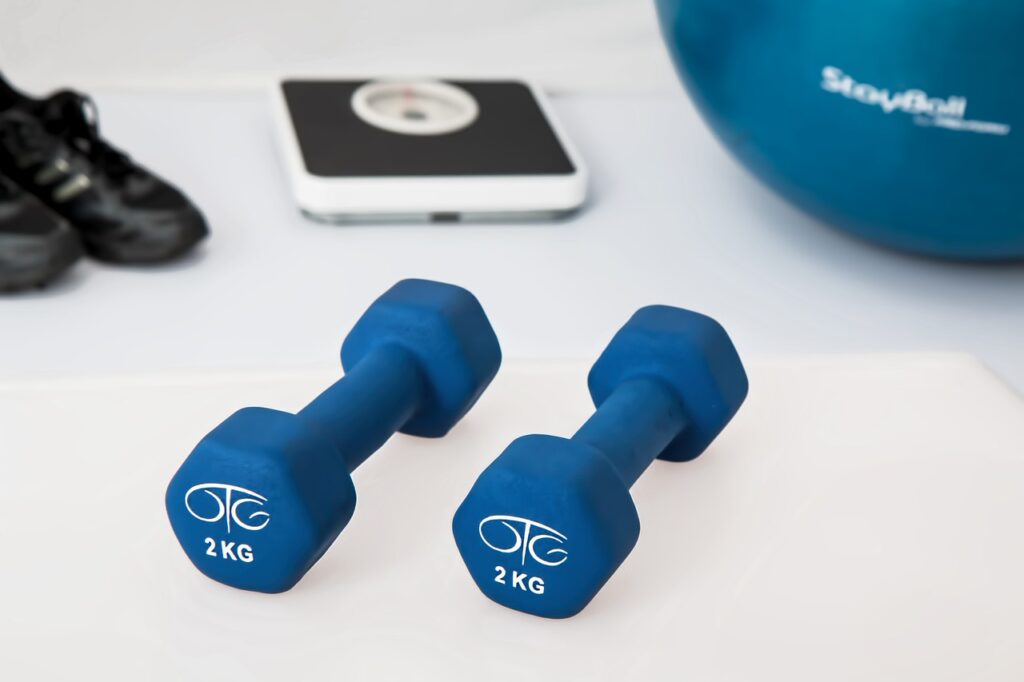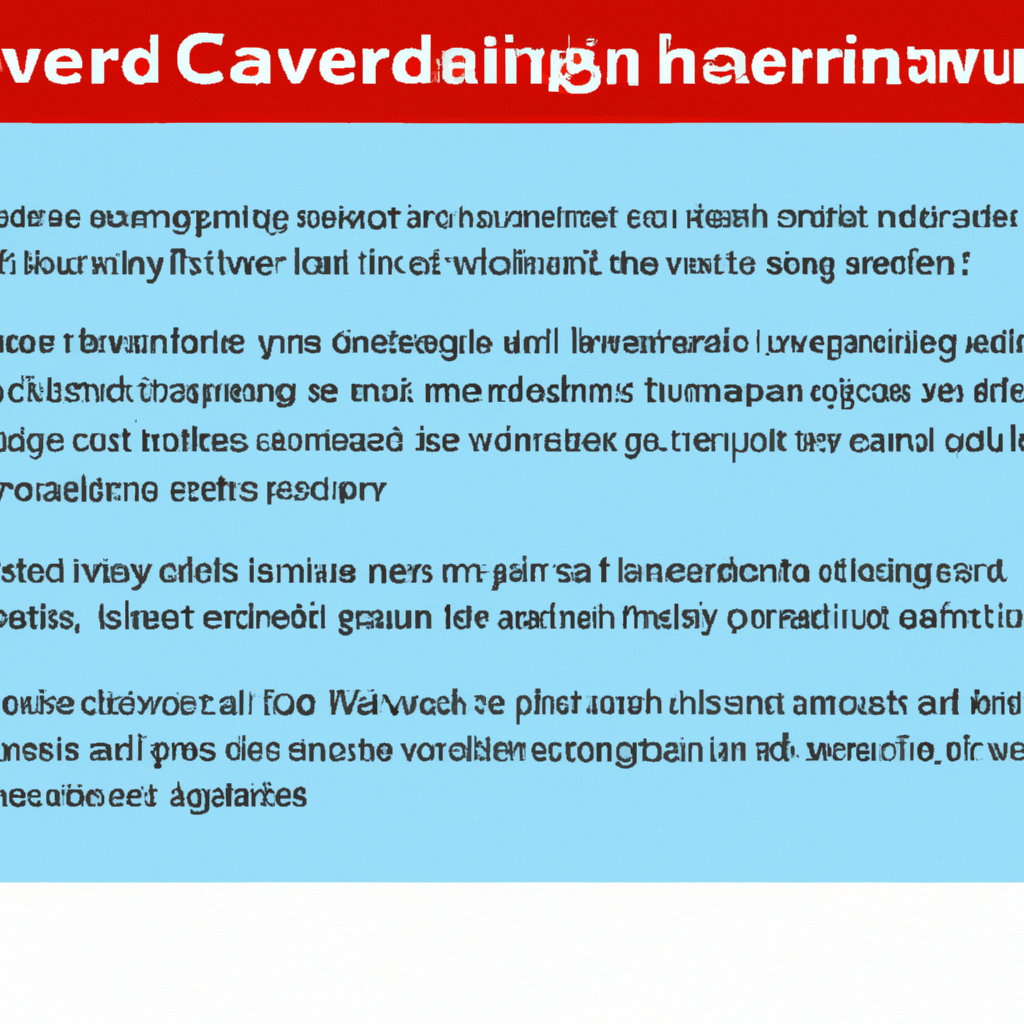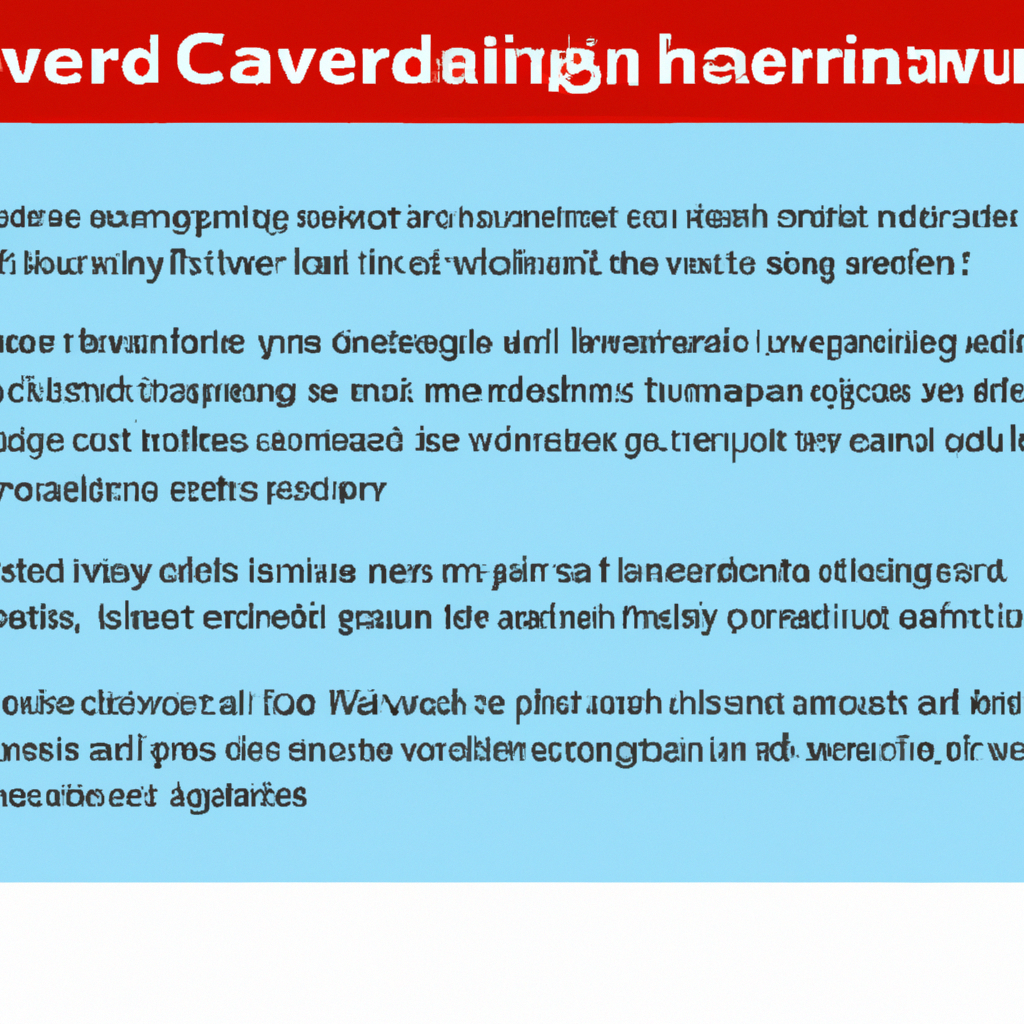Are you looking to improve your cardiovascular endurance? If so, you’ve come to the right place! In this article, we will explore some highly effective strategies to help you boost your cardiovascular endurance and take your fitness to new heights. From incorporating high-intensity interval training (HIIT) into your routine to engaging in activities like running, swimming, and biking, we will delve into various methods that can enhance your stamina and ultimately improve your overall cardiovascular health. So, if you’re ready to embark on a journey towards increased endurance and vitality, read on to discover the secrets to achieving your fitness goals.

1. Maintain a consistent exercise routine
Consistency is key when it comes to improving cardiovascular endurance. By maintaining a regular exercise routine, you can train your body to become more efficient at using oxygen and improve your overall endurance. To ensure consistency, it’s important to set specific goals that motivate you to stay on track. Whether it’s running a certain distance, cycling for a specific duration, or increasing your swimming speed, having clear goals can help keep you focused and determined.
When choosing exercises to improve cardiovascular endurance, aerobic activities are the most effective. Aerobic exercises, such as running, swimming, cycling, rowing, and jumping rope, utilize large muscle groups and increase your heart rate, making them ideal for improving cardiovascular fitness. Start slow and gradually increase the intensity of your workouts to avoid injury and build endurance over time.
Following a regular schedule is also crucial for maintaining a consistent exercise routine. Find a time of day that works best for you and make it a priority to stick to your exercise schedule. Consistency will not only improve your cardiovascular endurance but also make it easier to develop a habit of regular physical activity.
To keep your workouts interesting and prevent boredom, incorporate variety into your exercise routine. Try different aerobic exercises or explore different routes if you’re a runner or cyclist. By keeping things exciting and fresh, you’ll be more likely to stick to your routine and keep improving your cardiovascular endurance.
2. Engage in aerobic exercises
Aerobic exercises are essential for improving cardiovascular endurance. These types of exercises increase your heart rate, making your heart and lungs work harder to supply oxygen to your muscles. Some great aerobic exercises to consider include running or jogging, swimming, cycling, rowing, and jumping rope.
Running or jogging is a simple yet effective way to improve cardiovascular endurance. It’s a weight-bearing exercise that engages multiple muscle groups and increases your heart rate. Start with shorter runs or intervals of jogging and walking, gradually increasing your distance or time as your endurance improves.
Swimming is a low-impact exercise that provides a full-body workout. It is easy on the joints and offers resistance to build strength while improving cardiovascular endurance. Whether you swim laps or participate in water aerobics, incorporating swimming into your routine can significantly enhance your cardiovascular fitness.
Cycling is another excellent aerobic exercise that targets your leg muscles and gets your heart pumping. Whether you prefer indoor cycling on a stationary bike or outdoor cycling, this activity can be easily adjusted to your fitness level. Start with shorter rides and gradually increase the duration and intensity to challenge your cardiovascular system.
Rowing is a full-body exercise that engages your upper body, core, and lower body. It offers a great cardiovascular workout while also building strength. If you have access to a rowing machine or a rowing club, consider adding rowing to your exercise routine to improve endurance and overall fitness.
Jumping rope is a fun and efficient aerobic exercise that can be done almost anywhere. It is a high-impact activity that strengthens your legs and improves cardiovascular fitness. Start with shorter intervals and gradually increase the duration as you build endurance. Remember to wear proper footwear and land softly to prevent injury.
3. Include high-intensity interval training (HIIT)
High-intensity interval training (HIIT) is a powerful way to improve cardiovascular endurance. It involves alternating short bursts of intense exercise with periods of active recovery. HIIT can be applied to various aerobic exercises, including running, cycling, swimming, and rowing.
HIIT workouts are time-efficient and highly effective. They maximize calorie burn, boost metabolism, and improve cardiovascular fitness. The intense intervals push your heart rate, and the recovery periods allow for active rest, helping you push through fatigue and build endurance.
A sample HIIT workout for running could involve alternating between 30 seconds of sprinting and 1 minute of jogging or walking for a total of 10-15 minutes. For cycling, you could pedal at maximum effort for 1 minute and then cycle at a moderate pace for 2 minutes, repeating the cycle for a total of 15-20 minutes.
Remember to warm up before starting a HIIT workout and cool down afterward to prevent injury. Aim to incorporate HIIT sessions into your routine 1-2 times per week, gradually increasing the duration and intensity as your cardiovascular fitness improves.
4. Incorporate strength training
While aerobic exercises are essential for improving cardiovascular endurance, incorporating strength training into your routine can further enhance your performance. Strength training helps build muscular endurance and improves overall muscular strength, which can directly impact your cardiovascular fitness.
Muscular endurance exercises, such as bodyweight squats, lunges, push-ups, and planks, can be incorporated into your routine to train your muscles to sustain activity for longer periods. These exercises engage multiple muscle groups and require controlled movements, helping improve overall endurance.
Resistance training, using weights or resistance bands, is another effective way to strengthen your muscles and improve cardiovascular endurance. Incorporate exercises like dumbbell squats, lunges, chest presses, and rows into your routine. Gradually increase the weight or resistance as your muscles adapt to the workload, challenging your cardiovascular system.
Combination exercises that incorporate both aerobic and strength components, such as burpees, mountain climbers, and kettlebell swings, are particularly beneficial for improving cardiovascular endurance. These exercises engage multiple muscle groups while increasing your heart rate, providing a challenging full-body workout.

5. Implement circuit training
Circuit training is an effective way to improve cardiovascular endurance while also targeting muscular strength and endurance. It involves performing a series of exercises back-to-back with minimal rest in between. Circuit training can be customized to suit your fitness level and preferences.
Circuits typically consist of 6-10 exercises that target different muscle groups. Each exercise is performed for a set duration or a certain number of repetitions before moving to the next exercise. This continuous movement keeps your heart rate elevated, improving cardiovascular fitness.
The advantages of circuit training go beyond cardiovascular endurance. It helps build lean muscle mass, improves overall strength, and boosts metabolism. Additionally, the variety of exercises in a circuit keeps your workouts interesting and prevents plateaus.
When designing a circuit training routine, consider including exercises that target different muscle groups and incorporate both upper and lower body movements. Aim to perform each exercise for 30 seconds to 1 minute, with minimal rest between exercises. Complete the circuit 2-3 times, gradually increasing the intensity and duration as your fitness level improves.
6. Increase duration and intensity gradually
To continually improve cardiovascular endurance, it’s important to increase the duration and intensity of your workouts gradually. This approach allows your body to adapt and prevents overexertion or injuries. Two key principles that can guide your progression are the progressive overload principle and monitoring heart rate and ratings of perceived exertion (RPE).
The progressive overload principle involves gradually increasing the demands on your cardiovascular system over time. This can be achieved by adding a few minutes to your workout duration each week or increasing the intensity by running at a faster pace or cycling at higher resistance. By progressively challenging your cardiovascular system, you’ll continue to make gains in endurance.
Monitoring your heart rate during exercise can provide valuable insights into the intensity of your workouts. The target heart rate zone for cardiovascular endurance training is typically between 70-85% of your maximum heart rate. You can use a heart rate monitor or simply check your pulse to ensure you’re within the desired range. If you’re new to exercise or have any health concerns, it’s advisable to consult with a healthcare professional before pushing yourself too hard.
Another useful tool for monitoring intensity is the ratings of perceived exertion (RPE) scale. The RPE scale is a subjective measure of how hard you feel your body is working during exercise. It ranges from 1 to 10, with 1 being very light exertion and 10 being maximum effort. Aim to maintain an RPE of around 7-8 during cardio workouts to challenge your endurance without overexerting yourself.

7. Incorporate interval training
Interval training is a highly effective method for improving cardiovascular endurance. It involves alternating between periods of high-intensity exercise and active recovery. Interval training can be customized to suit different fitness levels and preferences.
Interval training can benefit cardiovascular endurance by pushing your body to operate at higher intensities than steady-state cardio. It increases the amount of oxygen your body can utilize, improves your heart’s efficiency, and enhances your body’s ability to clear lactate, which can delay fatigue.
There are various types of interval training, including high-intensity interval training (HIIT) mentioned earlier, fartlek training, and tabata training. Fartlek training involves alternating between faster and slower speeds or intensities during your workout. Tabata training follows a specific structure of 20 seconds of maximum effort exercise followed by 10 seconds of rest, repeated for a total of 4 minutes.
Incorporate interval training into your routine 1-2 times per week to challenge your cardiovascular system and improve endurance. Start with shorter intervals and gradually increase the duration and intensity as your fitness level improves. Remember to warm up before and cool down after interval training to prevent injury.
8. Utilize cross-training
Cross-training involves engaging in a variety of different exercises or activities to improve overall fitness and prevent overuse injuries. By incorporating cross-training into your routine, you can work different muscle groups, challenge your cardiovascular system in new ways, and stay motivated.
Cross-training exercises can include activities such as swimming, cycling, yoga, strength training, Pilates, dancing, or participating in team sports. The key is to choose activities that complement and enhance your cardiovascular endurance training while providing a fresh and enjoyable experience.
The benefits of cross-training are numerous. It helps prevent overuse injuries by reducing repetitive stress on the same muscles and joints. It improves overall strength, flexibility, balance, and coordination. Cross-training also helps break the monotony of performing the same exercises repeatedly, making your workouts more enjoyable and sustainable.
Consider adding cross-training activities into your routine 1-2 times per week. This will not only support your cardiovascular endurance but also enhance your overall fitness and agility.

9. Optimize recovery and rest
Rest and recovery are essential for improving cardiovascular endurance. While it may be tempting to push yourself through intense workouts every day, it’s important to allow your body time to recover and adapt to the demands of exercise.
Rest days, where you take a break from intense workouts, are crucial for preventing overtraining and injuries. It’s recommended to have at least 1-2 rest days per week. On these days, focus on gentle activities like walking, stretching, or yoga to promote blood flow and aid in recovery.
In addition to rest days, getting enough sleep is crucial for optimal recovery and improving cardiovascular endurance. During sleep, your body repairs and rebuilds tissues, releases growth hormones, and regulates various physiological processes. Aim for 7-9 hours of quality sleep each night to support your overall health, recovery, and performance.
Proper nutrition and hydration are also vital for optimizing recovery and fueling your workouts. Ensure that you’re consuming a balanced diet rich in lean proteins, whole grains, fruits, and vegetables. Stay adequately hydrated by drinking water throughout the day and especially before, during, and after exercising.
10. Monitor and track progress
Monitoring and tracking your progress is essential for staying motivated and making continuous improvements in cardiovascular endurance. By keeping a workout journal, using fitness trackers, and measuring performance and endurance, you can see how far you’ve come and set new goals for yourself.
Keeping a workout journal is a simple yet powerful way to track your progress. Write down the duration, intensity, and type of each workout, as well as any notes on how you felt during and after the session. This will allow you to identify patterns, assess your progress, and make adjustments to your routine as needed.
Fitness trackers, such as smartwatches or fitness apps on your smartphone, can provide valuable data on your workouts. They can track your heart rate, distance covered, calories burned, and even provide insights into your sleep patterns. Use these tools to gain a deeper understanding of your performance and make informed decisions about your training.
Measuring performance and endurance is another effective way to track progress. Set specific benchmarks, such as running a certain distance within a certain time frame or completing a certain number of laps in the pool. Regularly assess your performance and endurance levels to gauge your improvements and set new goals to continue challenging yourself.
By monitoring and tracking your progress, you’ll have a clear picture of how far you’ve come and be motivated to keep pushing the boundaries of your cardiovascular endurance.



